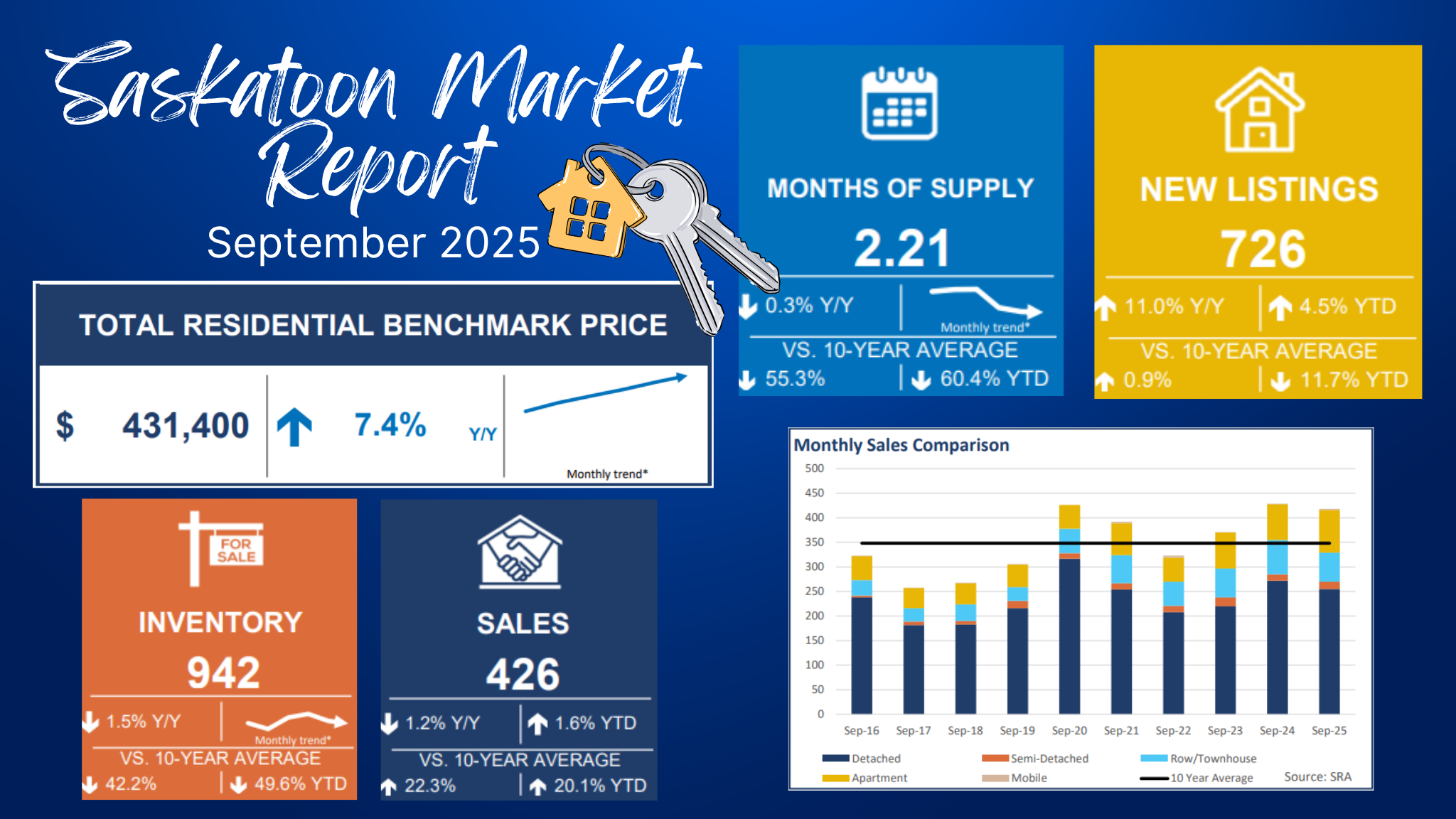December 3, 2025
Saskatchewan’s housing market continued its strong performance in November, marking the 29th consecutive month of above-average sales. With 15,430 sales year-to-date, the province remains on track to surpass 2024’s impressive activity.
A total of 1,073 sales were reported in November—down 9% compared to November 2024. Despite the year-over-year dip, monthly sales still landed 12% above the 10-year average, highlighting consistent and resilient demand across the province.
“November’s statistics reinforce what we have been seeing all year,” said Association CEO Chris Guérette. “Strong demand and resilient activity continue to outperform expectations. We are on pace to exceed last year’s near-record sales with significantly less inventory, which speaks to the strength of Saskatchewan’s market and buyer confidence in this province.”
Saskatchewan saw 1,376 new listings in November—slightly above last year but still well below historical norms. Inventory remains tight, sitting 45% under the 10-year average. Of the 4,165 active listings, 708 are conditionally sold, leaving 3,457 active units heading into December.
The provincial benchmark price reached $360,500 in November—down slightly from October’s $362,700. The soft month-to-month change reflects normal seasonal trends, while prices remain 7% higher year-over-year.
Guérette added: “Buyers continue to show confidence in the market despite tight conditions, and strong permit and start activity is encouraging. But short-term policy proposals that restrict supply won’t solve affordability. Band-aid measures like rent control don’t add homes—they reduce access to them. Saskatchewan’s momentum depends on coordinated, supply-focused policy heading into 2026.”
Regional Highlights
Every economic region in Saskatchewan reported year-over-year sales declines in November, ranging from a 4% drop in the Saskatoon-Biggar region to a 40% decrease in Yorkton-Melville. Still, most regions remain ahead of their long-term averages and are positioned to surpass 2024 totals.
Inventory shortages are consistent across the province, ranging from 33% to 71% below the 10-year average, with the Saskatoon-Biggar region continuing to report the tightest supply conditions.
Price Trends
Home prices continued to climb in November, with every region posting year-over-year benchmark gains for the seventh consecutive month.
The City of Melville led the province with a 20% annual increase, followed by strong price growth in several centres:
Estevan: +16%
Swift Current: +15%
Yorkton: +15%
Humboldt: +13%
Weyburn: +13%
Meadow Lake: +11%
The steady price appreciation reflects a market where demand continues to exceed supply, particularly in affordable segments.
City of Saskatoon
Saskatoon posted 372 sales in November, down 2% year-over-year but still 25% above the 10-year average for the month.
While the city recorded another month of rising new listings, high sales activity prevented meaningful inventory relief. Supply levels remain over 40% below historic norms.
Of the 808 active properties at the end of November, 217 were conditionally sold, leaving 591 listings moving into December.
Saskatoon’s benchmark price reached $421,000, up from $420,300 in October and over 6% higher than November 2024.
If you’re ready to make your next move, let’s chat about your goals and find the right strategy for today’s market.








